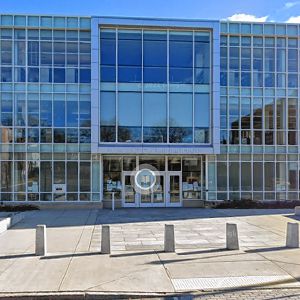Spigot opens for housing authorities: County leaders excited about what $2B statewide authorization will mean for residents here
| Published: 09-09-2024 3:40 PM |
NORTHAMPTON — Maintaining and improving existing public housing properties is an ongoing challenge for local housing authorities with limited resources, an issue that housing advocates and professionals are hopeful the state’s $5.16 billion housing bond bill will help address.
Officially known as the Affordable Homes Act, the legislation signed into law in early August by Gov. Maura Healey includes a $2 billion authorization for public housing modernization — a measure that leaders of two of Hampshire County’s largest public housing authorities say will make a huge difference in the lives of their current and future tenants.
“There’s a lot in the law for housing authorities, and it provides an exciting opportunity,” says Pamela Rogers, executive director of the Amherst, Belchertown and Hadley housing authorities.
Cara Leiper, executive director of the Northampton, Easthampton and Hatfield housing authorities, says financial support through the act will enhance the quality of life for those being served.
“This act not only allows us to move much-needed capital projects forward sooner than initially planned, but also enables us to improve unit turnover efficiency, addressing a key challenge in public housing management,” Leiper said. “These resources will allow us to address long-standing challenges faced by our residents, many of which stemmed from budgetary constraints.”
The sentiment about the Affordable Homes Act is likely shared by almost all local housing authority officials across the state, said Cylas Martell-Crawford, director of Policy and Program Development for the Massachusetts Chapter of the National Association of Housing and Redevelopment Officials, or NAHRO Inc.
While the bond bill includes some specific line items for some housing authorities, including $1.2 million for capital improvement projects and upgrades at the Holyoke Housing Authority and $500,000 for similar work at the Easthampton Housing Authority, all housing authorities should have access to a bigger pot of money.
Martell-Crawford said that repairing, rehabilitation and modernization is a challenge, so the bond bill, over the next five years, will bolster the foundation formula for funding local housing authorities, meaning they will be able to get more capital funding from the Executive Office of Housing and Livable Communities. That formula is based on the number of participants being served.
Article continues after...
Yesterday's Most Read Articles
“It’s a significant authorization for more money,” Martell-Crawford said. “It is considerably more money that will be flowing in.”
But it may take a year or two to see the money begin having an impact on those in the region. “We’re all gearing up to make sure things get done,” Martell-Crawford said.
Rogers said in the three towns she oversees, with a combination of 852 public housing units and housing vouchers, the housing authority regularly seeks money from the state agency for upgrading cabinetry and making the apartments more accessible, especially since much of the housing stock dates to the 1960s and 1970s.
Like other housing authorities with limited funding, Rogers also has turned to other sources, such as putting in requests from Community Preservation Act and Community Development Block Grant money to supplement the state dollars.
State Rep. Lindsay Sabadosa, D-Northampton, said in the coming weeks and months the state’s executive office will decide how the funds will be released and divided, based on the most pressing needs at each housing authority, while keeping in mind the state’s bond cap.
“While there isn’t a specific line item for the Northampton Housing Authority, I expect that the (Healey) administration is working to release some of the $2 billion capital authorization for the rebuilding, renovation and remodeling of our public housing authorities as approved by the Legislature,” Sabadosa said.
Sabadosa said she tried to insert Northampton-specific money, but without a known project she didn’t have success. Still, she said the most recent environmental bill had $1 million for green-related initiatives that can be pursued by the Northampton Housing Authority.
Leiper said the advocacy for affordable housing by Sabadosa, as well as state Rep. Daniel Carey, D-Easthampton, and Sen. Jo Comerford, D-Northampton, is instrumental in ensuring critical state resources are directed to where they are most needed.
“I am particularly grateful that Easthampton was able to secure a portion of the funds provided through this act,” Leiper said, adding that the money will help speed up the capital plan for the 200 units in the city.
Other parts of the housing bond will go to competitive grants, and while unknown what grant programs will be created, Martell-Crawford said these could feature electrification projects that make existing developments greener and improve and reduce costs for tenants.
Rogers, too, said she believes there should be competitive money for energy incentives, which could, for instance, encourage properties to switch over from gas to using more mini-splits, giving tenants a more reliable source of heat and air conditioning.
In previous years, the state took steps to address the concern about vacancies lingering in public housing, creating a statewide database to ensure apartments were filled and people in the queue would get housing. This has not been without issues, though, as some of those looking for housing are directed to apartments far from where they want to live, possibly in the Pioneer Valley, even though they want to be closer to Boston.
The Common Housing Application for Massachusetts Programs, or CHAMP, was promulgated as a statewide application system in the 2014 Housing Bill, and was supposed to help get units filled by putting everyone on an even playing field, and ensuring no more than 30 days elapsed before a unit was turned over.
But instead, because of the application process and lack of capital funding, it’s taking upward of six months to turn over a unit. Currently, there are 14 units vacant in Amherst, four in Belchertown and four in Hadley, Rogers said.
Leiper said in the broader housing industry, the average vacancy rate stands between 4% and 5%, but in the properties her agency oversees — 618 in Northampton, 200 in Easthampton, 40 in Hatfield and 40 between Cummington and Huntington — it has been less than 2%, even with ongoing challenges like rising material costs and labor shortages. There are three vacancies in Easthampton, three in Hatfield and 10 in Northampton, though all six in Northampton are ready to lease up. Leiper credits her team for continuing to provide safe, affordable housing.
Meanwhile, added on to the $2 billion for the public housing modernization is another $200 million that will go toward development of new apartments. The idea is to have housing authorities leverage this money for future mixed-income projects, increasing housing stock.
Rogers said there may be potential to partner with nonprofit developers to use land owned by the Amherst, Belchertown and Hadley housing authorities for construction of new dwellings. While nothing is imminent, this will be something to explore, she said.
The state housing bond bill was applauded by the Citizens’ Housing and Planning Association as putting the state on the path to creating 200,000 new homes across all income levels, helping the communities across the state, and the economy, to thrive.
Though Jonathan Cohn, policy director of Progressive Massachusetts, was critical of the bill because it, like other actions taken by legislators, doesn’t go far enough.
“The Legislature whittled away at the policy components of Governor Healey’s housing bond bill, caving to real estate interests and ignoring public opinion,” Cohn said. “We have a housing crisis and a climate crisis, and our Legislature is in clear denial about both.”
In addition to the direct support for local housing authorities, the final bill contained $228.7 million for other specific initiatives in the region, including: $1 million for the Hilltown Community Development Corp. for the creation of new housing and redevelopment of vacant properties in rural hilltowns; $2 million for Way Finders, Inc. for the East Street and Belchertown Road affordable housing development in Amherst; $1.5 million for Way Finders’ multi-phase housing development on South High street in Holyoke and an additional $275,000 for the nonprofit to do capital improvement projects and upgrades at the Southampton Meadows apartments; $500,000 for Valley Community Development Corp. to design and construct solar energy systems and develop the Amherst Community Homes; $1 million for Leverett to meet its comprehensive plan with housing and redevelopment efforts and coordinate those with neighboring towns; and $1.47 million for Valley Community Land Trust, Inc. to acquire land and construct and develop affordable housing in Franklin County.
Scott Merzbach can be reached at smerzbach@gazettenet.com.










 Hopeful buyers emerge for Magic Wings butterfly conservatory in South Deerfield
Hopeful buyers emerge for Magic Wings butterfly conservatory in South Deerfield Area briefs: Mount Holyoke’s Trailblazers of Color conference; Holyoke Library to host annual mini golf and games; Westfield State launches paramedic program
Area briefs: Mount Holyoke’s Trailblazers of Color conference; Holyoke Library to host annual mini golf and games; Westfield State launches paramedic program  Putting themselves on the line: Activists say nonviolent protests focus attention, inspire others, drive change
Putting themselves on the line: Activists say nonviolent protests focus attention, inspire others, drive change Legislation inspired by a Leverett family allows school bus monitoring systems
Legislation inspired by a Leverett family allows school bus monitoring systems
